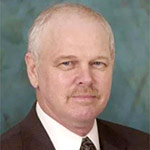“When Congress seems slow to solve problems, it may be only natural that those in the Executive Branch might seek to take matters into their own hands. But the Constitution does not authorize agencies to use pen-and-phone regulations as substitutes for laws passed by the people’s representatives. In our Republic, ‘[i]t is the peculiar province of the legislature to prescribe general rules for the government of society.’ ”
— West Virginia v EPA (2022), Justice Gorsuch concurring.
Justice Gorsuch did not announce a novel legal theory. The Supreme Court first recognized it was a fundamental basis of our democratic republic over 200 years ago. The underlying theory predated the Constitution. Apparently the unelected bureaucrats in the federal Environmental Protection Agency didn’t get the memo !
The question decided by the Supreme Court last month in West Virginia v EPA was who gets to make laws that will result in “a generation shifting approach” to the production of energy in our country – the people’s elected representatives in Congress, or unelected bureaucrats in the EPA?
The Court said, based on the principle of separation of powers, Congress does.
In Part One, I laid out the basics of ‘separation of powers’. Justice Gorsuch simply pointed out what in my day every 8th grader who passed a civics class knew. That the elected legislature is the only branch with the power to enact “general rules for the government of society” — not un-elected bureaucrats in an agency which is part of the executive branch.
That this is considered a “radical” notion to so many folks today is further testament to the failure of our public education system. It’s why here, in the free state of Florida, our legislature has mandated civics once again be taught as a requirement to graduate high school.
The concept of dividing government into separate branches to prevent power from becoming concentrated was first broadly espoused in 1748 by the french political writer Charles Louis de Secondat, Baron de Montesquieu — who published his tour de force, The Spirit of the Laws under his mercifully simplified nom de plume “Montesquieu”.
He explained that the liberty of the people could only be preserved if the power of government is not concentrated. He wrote:
“When the legislative and executive powers are united in the same person, or in the same body of magistrates, there can be no liberty…”
This EPA case demonstrates that danger. Un-elected bureaucrats enacted a rule, which they would then have the executive power to enforce, thereby concentrating the power of both branches in themselves.
Because when someone is self-righteously pursuing a ‘Green’ agenda that you can’t get passed in Congress, then to hell with the ‘checks and balances’ the founders built into the Constitution to protect us from faction. After all, if we mere citizens don’t know what’s good for us, the morally superior climate champions in the EPA do — and will make us petulant children eat our veggies.
Contrary to public opinion, the majority of Supreme Court decisions do not always involve interpreting the constitution. Late Supreme Court Justice Antonin Scalia acknowledge that when he said in a 2007 speech, “[C]ourts in the United States spend most of their time interpreting statutory law.”
This EPA case required the Court to interpret 42 United State Code Chapter 7411 (the “New Source Standards of section 111″ of the 1970 Amendments to the Clean Air Act). If you are having trouble falling asleep you can read it here.
But just like a tiny acorn can grow into a majestic oak, so can the interpretation of an arcane statutory subsection become a landmark case upholding the constitutional principle of separation of powers.
Here’s what the case was about. The EPA used what it arrogantly considered its authority under that subsection to enact a rule that would have the effect of permanently shutting down all fossil-fuel electricity generating plants in the country. As Chief Justice Roberts explained in the Court’s decision, the rule enacted by the EPA, “empowers it to substantially re-structure the American energy market.”
In Part One I referred to the “necessary and proper” clause of Article 1 of the Constitution, which empowers Congress to delegate authority to executive agencies to carry out laws such as the Clean Air Act. In this case the Court said the EPA could not rely on “ambiguous statutory text” “in the previously little-used backwater of Section 111(d)” to exert such “unprecedented power over American industry.”
The Court held: “A decision of such magnitude and consequence rests with Congress itself, or an agency acting pursuant to a clear delegation from that representative body”, and that Section 111 does not clearly delegate such authority to the EPA.
I’ve previously written in this forum about the difficulties of ‘statutory interpretation’. But deciding this rule exceeded EPA’s statutory authority wasn’t even a close call for the Justices.
The EPA bureaucrats belatedly realized that the rule exceeded their statutory authority, and that they had stepped in it, as soon as lawsuits were filed against the rule’s enforcement. So they repealed the rule.
But not from a ‘do-the-right-thing’ motive.
The EPA realized where such lawsuits could lead. To the Supreme Court doing exactly what it did – limit the EPA’s rule making authority with a holding that can extend beyond just this case.
As an aside, the Court deciding this case by deferring to Congress is not novel. Chief Justice Roberts who wrote the majority opinion in this case (deferring to Congress) also wrote for the majority in National Federation of Independent Businesses v Sebelius, which upheld Obamacare on the basis that it was enacted by Congress.
Supporters of Obamacare who disagree with this EPA decision can’t have it both ways.


